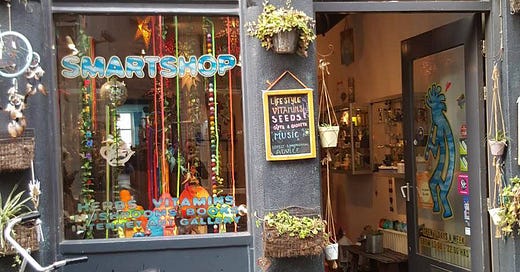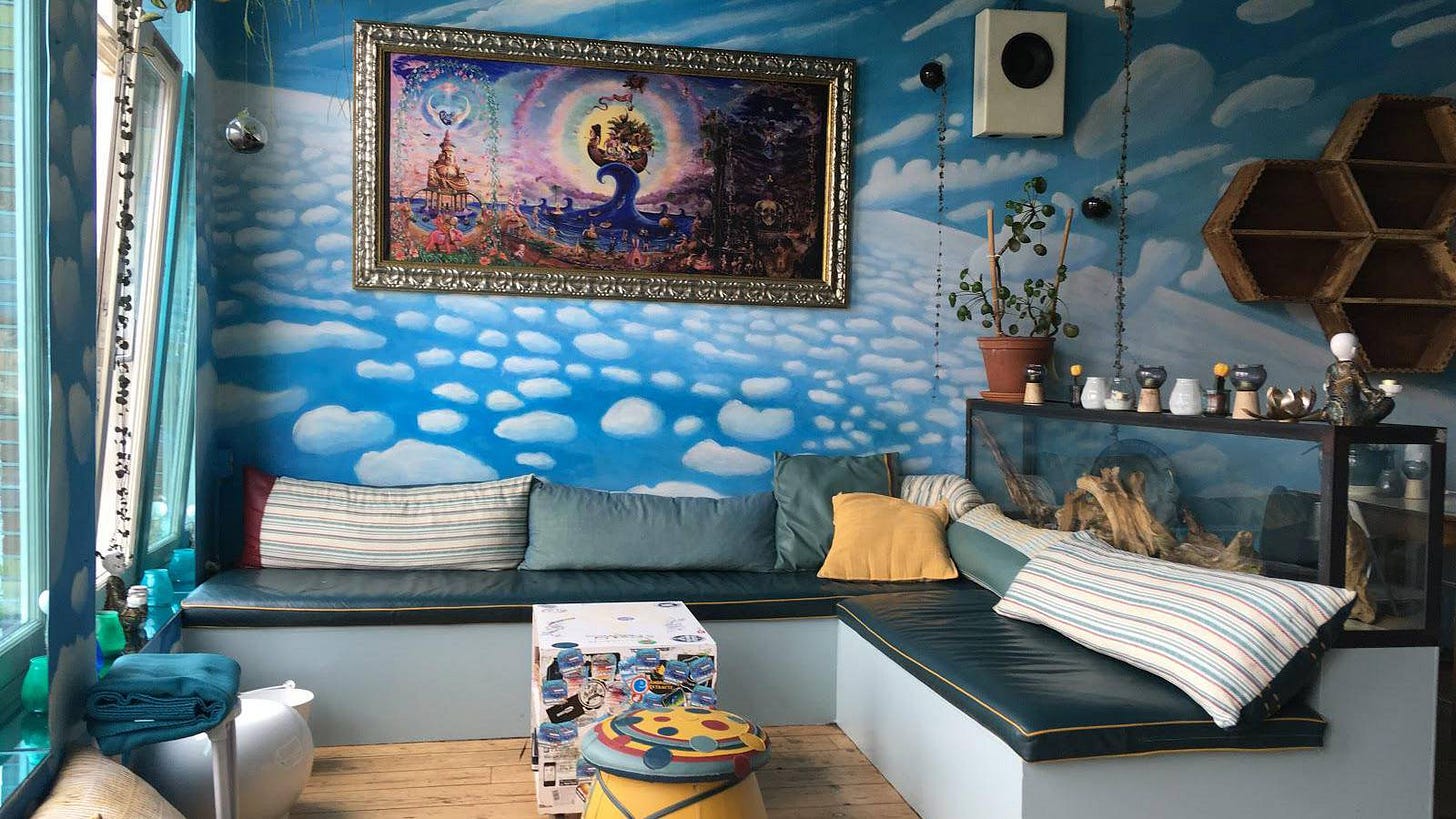Last time on Rave New World, we road tripped to Vancouver, Canada to hit an insane blackmarket dispensary called The Coca Leaf Cafe where you can buy everything from DMT vapes to mescaline shots in broad daylight. “Reading the news reports does not prepare you for the frisson of beholding a shroom dispensary in person—the shuddering thrill of standing at the edge of new frontier as it unfolds in real time.” I’ve just unlocked that post from behind the paywall, so go sip that shroomy tea :)
You can also listen to me gabbing about the latest drug trends on Neoliberal Hell, a new podcast by @matthewdonovan__ and @neoliberalhell2 that’s quickly becoming the pod-of-choice for the shitposter set. (Ya’ll know who you are!)
Paid subscriptions fuel all of this wild-ass work! To help me keep up this rare reportage, *rattles the donation can** throw us some bones and forward this to friends <3
The last shroom lounge in Amsterdam is hidden in one of the city’s many infamous zones of commodified debauchery, tucked between glazed-eyed tourists, souvenir shops, and leather fetish stores. Look closely, and you might spot handwritten signs saying SHAMANISM and COSMIC LOUNGE poking out of potted plants on the sidewalk, pointing towards an open door.
Step inside, and the wacky energy from the streets dissipates into an ocean of chill: the afternoon sun bathes the spacious loft in a warm pool of gold, while glistening water from the canal casts shimmering light against the art-covered walls. Two barefoot shopgirls giggle while prancing around the room, balancing crates on their heads. The shelves are stocked with books on psychedelics, candy-colored incense, tinctures of adaptogenic mushrooms, and psilocybin truffles. Downstairs, a private room doubles as a ceremony space and yoga studio. A DJ mixer sits on the counter next to the espresso machine. You get the vibe.
The spot is called Kokopelli, named after a North American fertility deity, and it’s low-key legendary: when it opened in 1994, it was one of the first “smart shops” to sell psilocybin mushrooms over the counter, and it remains a tripper sanctuary.
“Just so you know, the guy over there is tripping,” whispers the shroomtender behind the counter. She winks and points at a dude lying down on a cushioned bench, eyes closed with his lips curled into a smirk.
You won’t see this advertised on the shop’s website or social media, but Kokopelli has long been an under-the-radar safe space for tripping—everyone from seasoned psychonauts to nervous newbies are welcome to post up in their lounge, and spend a few hours shrooming while gazing out into the canal. It is one of the coolest vantage points in the city—and barely anyone knows it exists.
The shopgirl tells me this secret shroom lounge is particularly popular with tourists and teens who don’t have access to private spaces; locals prefer to trip in their own homes.
“Don’t worry,” she adds, nodding to the dude in the corner. “He’s totally chilling.”
Kokopelli is one of the last smart shops left in the city, and certainly the only one with a tripper lounge. This is because Amsterdam’s shroom and weed cafes are a dying breed, with many forced to close under new government regulations that are eroding the city’s reputation as a druggie Disneyland. The Dutch drug policy model was game-changing in the 70s, but now there are fentanyl dispensaries in Vancouver and psychedelic therapy offices in Portland. “The Netherlands is no longer inventing the future,” wrote the FT. “On cannabis, Dutch 1970s-style ‘toleration’ is being overtaken by legalization in other countries.”
In a way, Amsterdam is a European drug capital that used to be what Vancouver is now: an edgy social experiment at the bleeding-edge of progressive drug policy. Wandering around the city’s canal-lined streets in hash spliffed haze, I wondered what structural conditions precipitated the proliferation of drug dispensaries here back in the day—and why so many of these shops are now shuttering. It seems like the rise and fall of this narco Valhalla could be a valuable lesson for us all.
Weed was decriminalized in the Netherlands in 1976 as a form of harm reduction as heroin use spiked across Europe in the 70s. The Dutch drug policy model that emerged during this era was defined by its attitude of tolerance and political pragmatism; while cannabis and psychedelics were never fully legalized, the Netherlands’ “tolerance” model pioneered new ways of managing the risks of drug use and distribution, while reframing addiction as a public health concern rather than a moral consternation.
When the Netherlands revised its Opium Act of 1976, it categorized drugs as “hard” vs “soft,” with separate risk profiles and criminal penalties. (This segregation of substances remains extremely influential to how we classify drugs today, but it’s somewhat sus imo…)
Keep reading with a 7-day free trial
Subscribe to Rave New World to keep reading this post and get 7 days of free access to the full post archives.




